To enroll in the following courses, you must be admitted through the UAB Graduate School seeking a Master of Engineering (MEng) degree with a concentration in Structural Engineering (SE). The core curriculum courses are subject to additional SE fees.
Required Courses
-
CESE 656: Advanced Mechanics for Structural Engineering
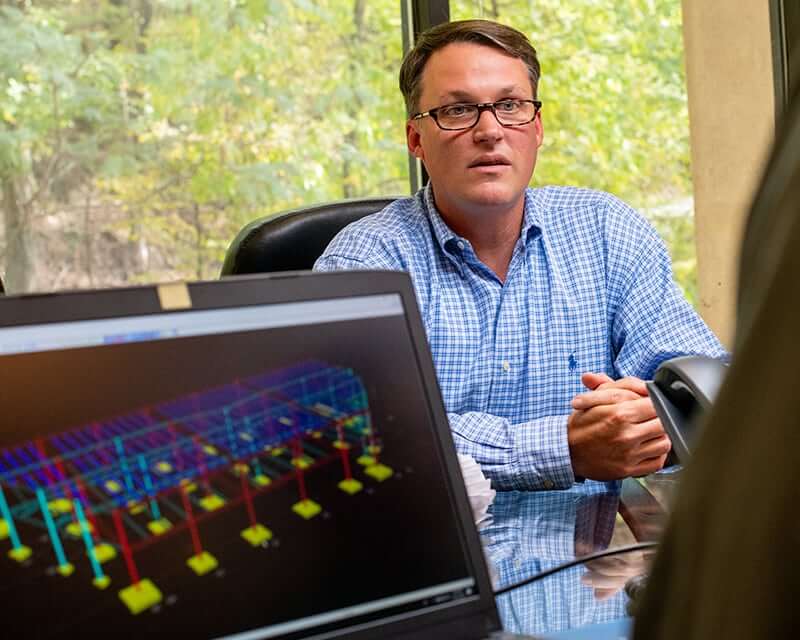 3 credit hours.
3 credit hours.Advanced Mechanics for Structural Engineering extends the concepts learned in a typical undergraduate Mechanics of Materials course to types of elements generally excluded from the undergraduate course.
This course covers three-dimensional states of stress and strain, material behavior beyond the elastic region, non-linear material behavior, and energy methods. Each of the topics of a typical undergraduate Mechanics of Materials course are extended. Axial stress and deformation beyond the elastic range is discussed, including post-yield behavior and residual stresses. Torsion of circular sections is extended into the plastic range with the discussion of the fully plastic torque, and stresses due to torsion of non-circular sections, including open and closed sections, is discussed. Bending is extended into the plastic range with the discussion of the fully plastic moment, and bending stresses in non-symmetric cross-sections is discussed. Elastic stresses due to bending of curved beams and beams on elastic foundations are also presented. The concept of shear center is presented, and methods for determining the location of the shear center of a cross-section are discussed. Finally, energy methods are used to determine the deformations due to the combined effects of axial forces, torsion, and bending.
-
CESE 657: Advanced Design of Steel Structures
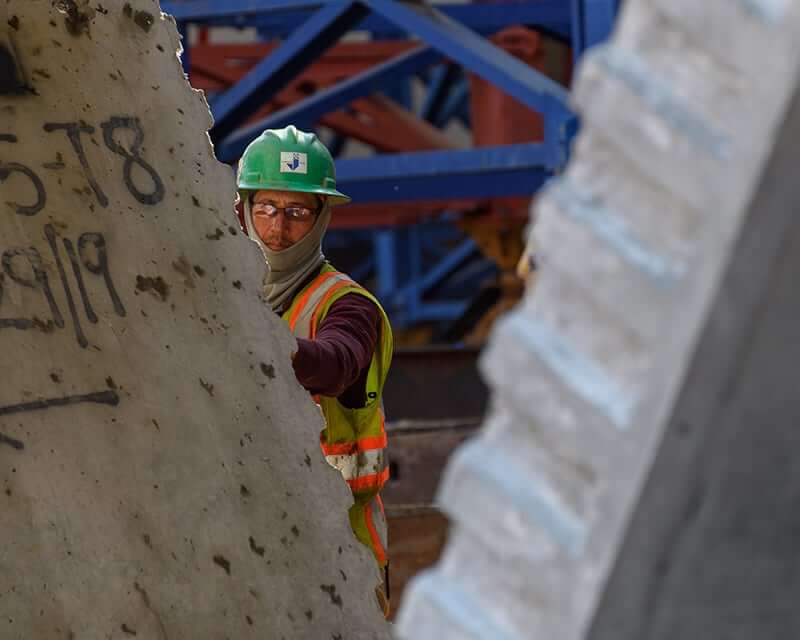 3 credit hours.
3 credit hours.Advanced Design of Steel Structures builds upon the topics covered in a typical undergraduate steel design course and continues coverage of the design of major components in steel-framed buildings.
This course covers the analysis and design of steel-concrete composite floor systems, slender columns, beam-columns, moment connections, bracing members and their connections, column base plates, and serviceability. The analysis and design of steel-concrete composite floor systems includes shored and unshored composite construction as well as design of shear connectors, moment capacity, and serviceability criteria. The analysis and design of slender columns includes analysis of second order effects and design for stability for columns subjected to axial for alone and columns subjected to axial force and bending. Analysis and design for serviceability includes topics on deflections and vibrations of floor and roof structures and lateral drift requirements.
-
CESE 659: Advanced Reinforced Concrete
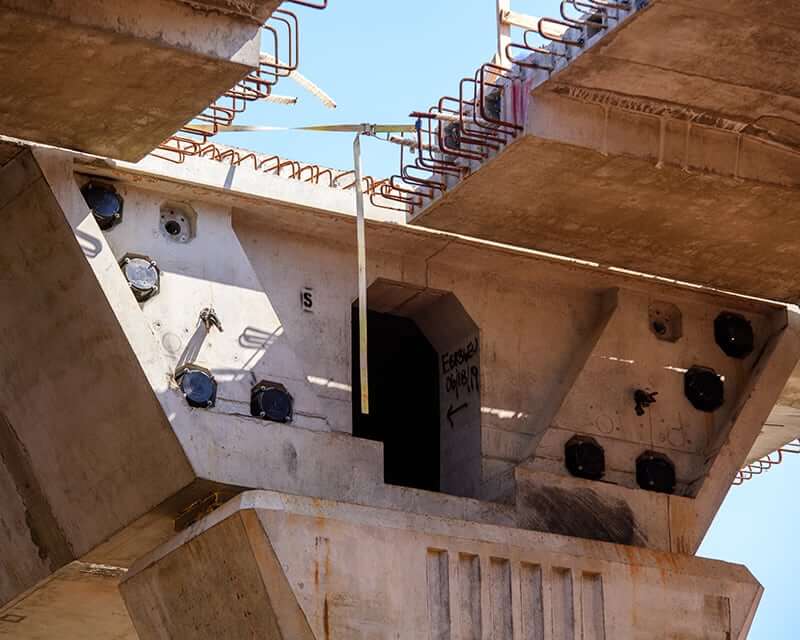 3 credit hours.
3 credit hours.Advanced Reinforced Concrete builds upon the topics covered in a typical undergraduate reinforce concrete design course and continues coverage of the design of major components in reinforced concrete buildings.
This course covers the behavior and design of continuous reinforced concrete structures. Specific topics covered include serviceability, slender columns, biaxial bending of columns, two-way slabs, torsion, and footings. Serviceability topics include the control of cracking in slabs and beams and calculation of live load deflections and long-term deflections. Topics related to slender columns include second order effects and the resulting moment amplification and stability related to sway and non-sway reinforced concrete frames. The design of columns subjected to biaxial bending includes the development of axial force–moment interaction diagrams for columns and design for biaxial bending using the reciprocal load and load contour methods. The Direct Design Method is used for the design of two-way slabs for shear and moment.
-
CESE 660: Prestressed Concrete Behavior and Design
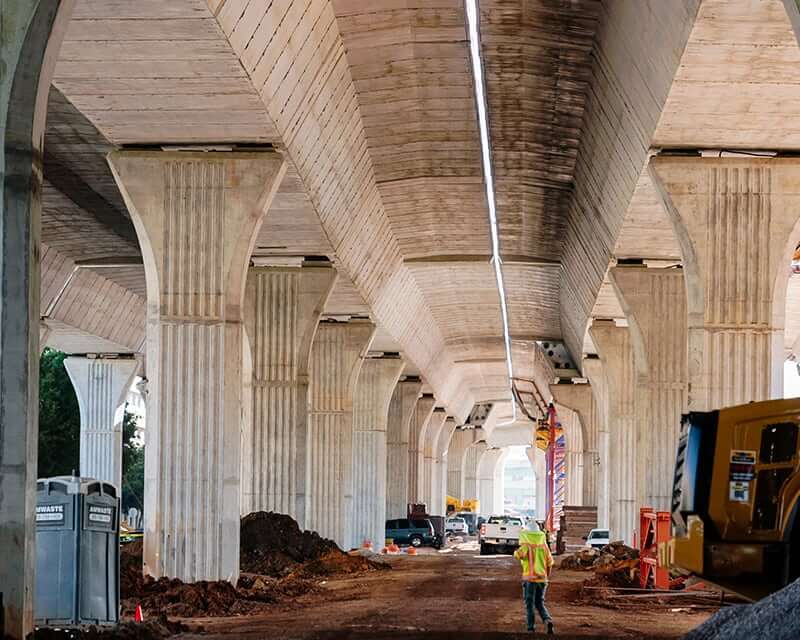 3 credit hours.
3 credit hours.Prestressed Concrete Behavior and Design introduces the principles and concepts of prestressed concrete. Topics include elastic and ultimate strength analyses for flexure and shear, camber and deflection, strand bond, and prestress losses.
This course introduces the concept of prestressing and the materials and methods for prestressing concrete and describes how and why prestressing improves the performance of concrete structures. With the concept and advantages of prestressing defined, the course covers design and detailing of prestressed concrete beams to satisfy service (allowable stress) and strength requirements for flexure and shear. In addition to service and strength requirements for beams, methods estimating short-term prestress loss due to elastic shortening and long-term prestress loss due to creep, shrinkage, and relaxation are discussed. The bond characteristics between prestressing strand and concrete are discussed to introduce the concept of the transfer length, i.e. the length over which the strand transfers the prestress force to the concrete, and flexural bond length, i.e. the length of embedment required for the strand to reach the required force at the flexural strength limit state. Finally, methods for estimating the short-and long-term camber and deflections of prestressed beams are discussed.
-
CESE 662: Advanced Structural Analysis
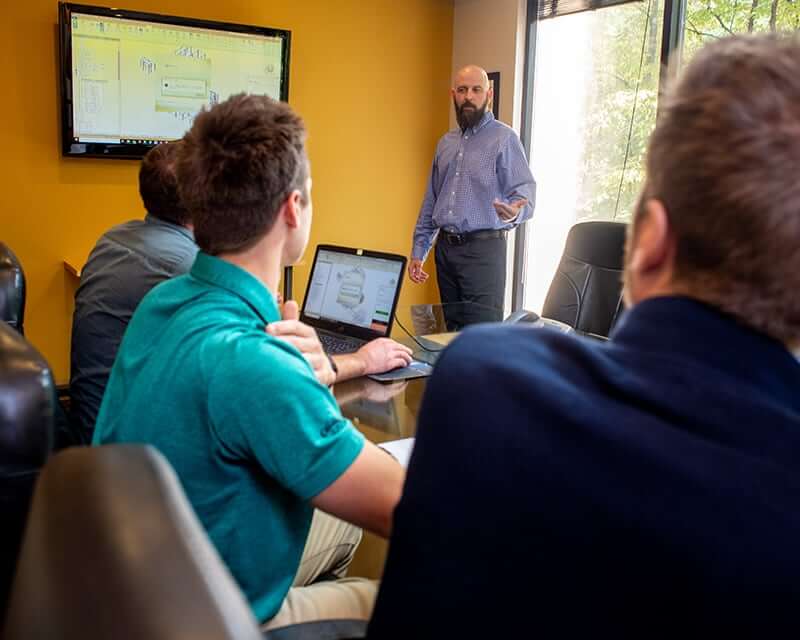 3 credit hours.
3 credit hours.Advanced Structural Analysis builds upon a typical undergraduate structural analysis course and covers additional discussion of structural loading, classical methods of analysis, matrix methods of analysis, and second order analysis.
This course focuses on structural loading and analysis of statically indeterminate structures. Topics on structural loading include developing influence lines for beams and frames to establish pattern loading of live load for maximum effect and lateral loads (wind and seismic) in simple building frames. Analysis of statically indeterminate structures includes the analysis of continuous beams, single-and multi-story non-way frames and single-and mulit-story sway frames using the slope-deflection, moment-distribution, and matrix-displacement methods. Analysis of trusses by the matrix-displacement method also discussed. Second order analysis of frames is presented using approximate methods and by modifying the slope-deflection and matrix-displacement methods to include second order effects. Finally, this course includes an individual project where a frame is analyzed by hand and via structural analysis software using first order and second order analysis.
-
CESE 664: Bridge Engineering
 3 credit hours.
3 credit hours.Bridge Engineering introduces this broad topic beginning with a brief history of this field in the U.S. and continuing through analysis and design of typical girder-type bridges in the U.S..
This course focuses on typical analysis and design methodologies for slab-on-girder bridges, the most common type of bridge in US. The course begins with a discussion of the history of American bridge engineering. Preliminary design of bridges is discussed along with the use design aides and roadway requirements to establish the initial geometry of a bridge. AASHTO requirements for bridge loading including gravity loads such as dead load, vehicular live load, and pedestrian live load and environmental loads such as wind, stream flow, ice floe, and earthquake loadings are presented. Moving load analysis is covered to develop shear and moment envelopes for the design truck, and the approximate analysis methods permitted by AASHTO to determine the shear and moment in slabs and girders are discussed. These approximate methods of analysis include the equivalent strip method of slabs, and the distribution factor method for girders. Finally, the design of reinforced concrete slabs and girders and prestressed concrete girders are discussed.
-
CESE 665: Structural Dynamics and Earthquake Engineering
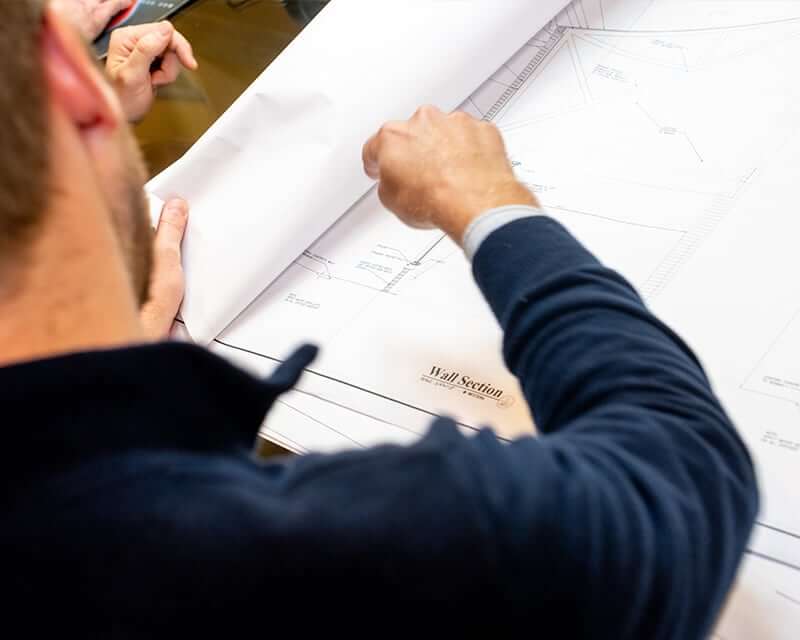 3 credit hours.
3 credit hours.Structural Dynamics and Earthquake Engineering includes the study of earthquake-induced vibrations and their effect on structures as well as topics on designing for earthquake-induced vibrations via building code compliant static and dynamic lateral load force procedures.
This course is approximately two-thirds structural dynamics and one-third earthquake engineering. The structural dynamics portion of the course covers topics in free and forced vibration of single-and mulit-degree of freedom systems along with response spectra and their use in earthquake engineering. The earthquake engineering portion of the course begins with a discussion of the source and effect of earthquake ground motions, how earthquakes are measured, and how seismic hazard maps are developed. Designing buildings for earthquakes is then covered with topics on the “equal displacement” principle in earthquake engineering, the code based “Equivalent Lateral Force” procedure, and types of seismic restraint systems and their details for steel and concrete building structures.
-
CESE 676: Design of Structural Steel Connections
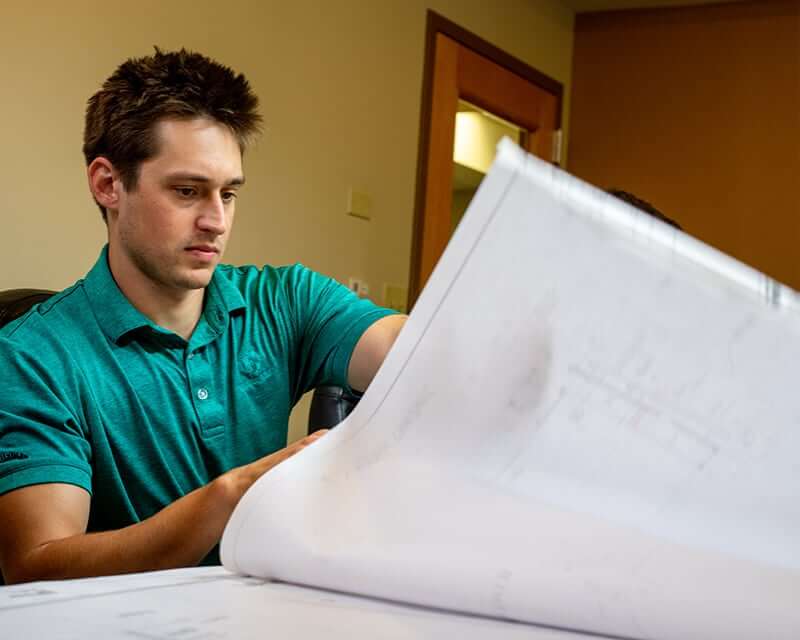 3 credit hours.
3 credit hours.The purposes of this course are to gain an understanding of load transfer mechanisms and to apply AISC Specification requirements and fundamental engineering principles to connections. The AISC Specification will be used to design bolted and welded connections, including shear, moment and brace connections.
Connection design is an important aspect in determining the strength of steel structures. Because many of the requirements for connection design are not addressed in the American Institute of Steel Construction (AISC) Specification, engineers must use their knowledge of statics and strengths of materials to design connections. Design procedures will be discussed for various structural steel connections. The background and limitations of the design procedures will be reviewed, but practical solutions will be the course focus.
Electives
-
CECM 669: Advanced Project Management
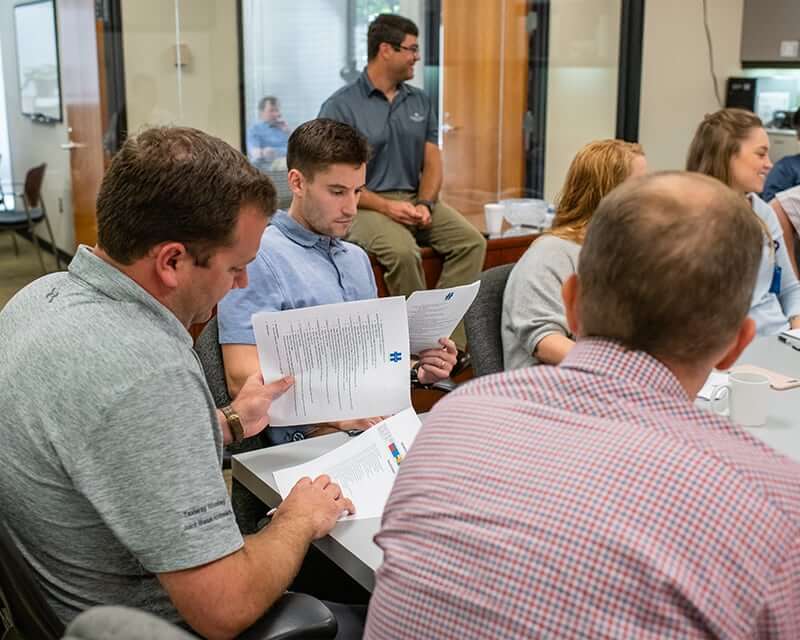 3 credit hours.
3 credit hours.Skills generally required for sound project management in a variety of management settings are studied, in addition to specific management issues typically associated with engineering and construction companies.
Students are introduced to the Project Management Institute’s Body of Knowledge (PMBOK). A discussion of corporate organizational structures and the evolving use of project management processes helps establish an appreciation for the role of a project manager. The elements of a project and the role and responsibilities of the project manager are studied in depth. Students are also acquainted with risk management concepts, financial, labor, safety, equipment, contracting issues facing managers in the engineering and construction environment. Particular emphasis is placed on individual management strengths and weakness, team building, and characteristics of successful companies.
One of the primary vehicles for discussion will be small case studies from real companies and the outside reading of one or two relevant topical books.
-
CECM 671: Construction Liability and Contracts
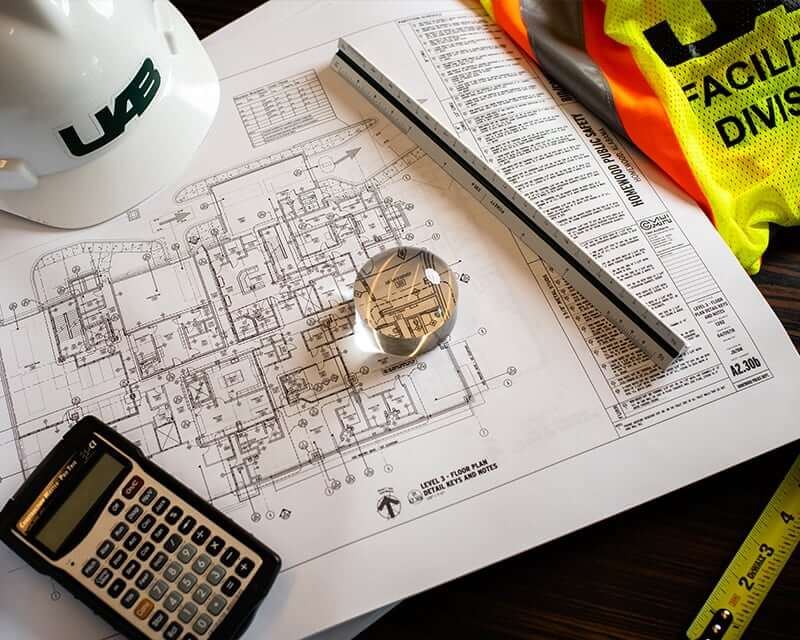 3 credit hours.
3 credit hours.This course provides an overview of the fundamental aspects of the laws that affect construction and engineering companies as well as the project owners.
Particular emphasis is placed on contract forms and provisions related to liability for engineering design and construction companies, the roles of the typical participation in the process, and dispute resolution. Students will learn the importance of contract language negotiations and the impact of project risk transfer.
-
CECM 673: Techniques of Project Planning and Control
 3 credit hours.
3 credit hours.This course provides a thorough understanding of the project scheduling process in construction planning and control.
Students learn the relationship between the work breakdown structure, organization breakdown structure, and the activities used in developing project schedules. The Critical Path Method (CPM), the Precedence Diagram Method (PDM), the Program Evaluation and Review Technique (PERT), and the Line of Balance (LOB) scheduling methods are discussed in detail to include hand calculations and powerful computer software products. The use of scheduling techniques for project control, resources constraint management, cash flow management, risk management, and project completion date management are investigated as is the importance of communications in the planning and monitoring/controlling processes.
Students will experience hands on use with Primavera scheduling software.
-
CECM 674: Green Building Design/Construction
 3 credit hours.
3 credit hours.This course provides an introduction to the emerging trends in green building sustainable design and construction.
The course will include instruction suitable to prepare students for the Leadership in Energy and Environmental (LEED©) Green Building Rating SystemTM certification exam.
-
CECM 675: Advanced Construction and Engineering Economics
 3 credit hours.
3 credit hours.This course provides an extensive overview of financial and managerial accounting concepts for non-financial managers.
Students will learn the basic elements of accounting (Generally Accepted Accounting Practices). They will understand how typical financial records and financial statements are established for companies. Once the basics are understood, students will study how financial data is used for internal cost controlling, planning, and budgeting. Fundamental financial calculations associated with the time value of money, debt instruments, taxes, inflation, and cash flow estimates are emphasized.
Students will be expected to demonstrate proficiency in the use of Excel business functions in solving financial problems.
-
CECM 676: Construction Project Risk Management
 3 credit hours.
3 credit hours.This course addresses the methodologies employed in the engineering and construction industries to assist in rational decision-making in the face of uncertainty.
The course reviews the fundamentals of common probabilistic theories and models, data sampling, hypothesis testing, and the basics of Bayesian Decision Theory. In addition, basic financial analysis tools will be reviewed. Theoretical models will then be applied to specific examples encountered in engineering and construction decision making with emphasis on engineering economics applications.
-
CECM 689: Building Information Modeling (BIM) Techniques
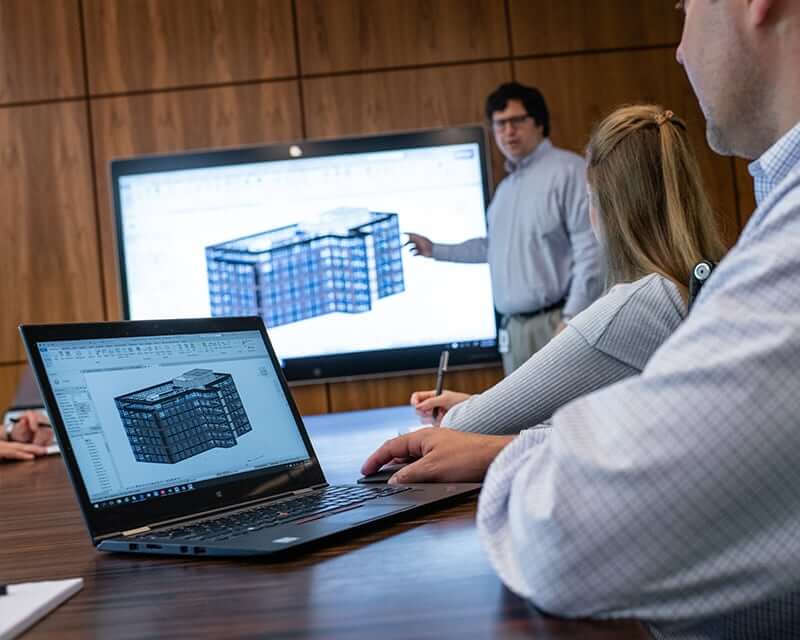 3 credit hours.
3 credit hours.This course provides students with an overview of the evolution of BIM technology in the construction industry followed by hands-on training in the basic application of contemporary BIM software.
Students will learn basic modeling skills and how to produce graphical presentations. Advanced applications of BIM technology will be discussed and demonstrated. Students will be provided with BIM software and will be required to complete a multi-step BIM model as a term project.